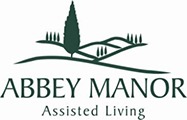For many seniors, home maintenance takes up valuable time that could be better spent connecting with family members and participating in enjoyable activities. That’s why moving to an assisted living community has so many benefits. Instead of raking leaves, shoveling snow and worrying about how much it’s going to cost to replace a leaky roof, you can focus on making new friends or finding a hobby you love.
Even when you find the right assisted living community, it takes time to settle in and get used to your new routine. To make the process easier, follow these tips for navigating the transition to assisted living.
Take Time to Choose the Right Assisted Living Facility
A successful transition starts with choosing the right community. If you decide that assisted living is the best fit for your needs, take time to research communities in your area. Here are a few questions to ask as you narrow down your list of options:
- Does the senior living facility offer multiple levels of care for seniors, such as skilled nursing or memory care, in case your needs change as you age?
- If the assisted living facility offers all-inclusive pricing, what does it cover? Are there any extra fees you need to know about?
- Is the assisted living community in a safe neighborhood?
- Does the community have positive inspection reports?

Touring Assisted Living Facilities: What to Look For
Once you have three or four assisted living communities in mind, contact each one to schedule a tour. Taking a tour gives you the opportunity to meet community staff members and learn more about their approach to caring for senior residents. You also get to speak to current residents and find out what they enjoy about the community.
During the tour, ask your guide about the following to ensure the facility is a good fit for your needs:
- Is the dining services open all day, or do you have to eat meals at specific times?
- Can the community accommodate your entire family if you want to spend time together for holidays and other special occasions?
- Are there regular opportunities to socialize with other residents?
- Is it easy for residents to access health care services?
- Does the community provide furniture, or do you have to bring your own?
- Are family caregivers allowed to visit frequently?
- Does the facility’s staff have specialized training in providing senior care?
- Can you have a family member stay overnight?
- Are employees available to help residents with scheduling appointments?
- Is a social worker available to help ease the transition to a new apartment?
- Does the community appear to have a vibrant social environment?
Preparing Emotionally for the Move
Even if you’re excited about moving to your new community, you may experience some strong emotions about leaving your family home. Before you make the transition, take time to prepare yourself emotionally. You may want to look through family photos or have loved ones over for a big dinner to celebrate the next chapter in your life. During this emotional transition, focus on the benefits of moving to a senior living community, such as not having to spend so much time maintaining your own home.
Making the Move: Tips for Downsizing and Packing
To ease the transition to your new environment, downsize as much as you can. Most facilities have floor plans available, making it easier to determine how much furniture you can fit in your new residence. Ask for one of these floor plans as early in the transition period as possible. If you have more furniture than you need, list the other items for sale or donate them to a local charity.
For best results, hire movers with extensive experience hauling furniture and other valuable items. If you hire professionals, you can spend more quality time with your loved ones before you move.

Getting to Know Your New Assisted Living Community
Once you’re settled, take time to explore the common areas and attend a few activities. You don’t have to do something new every day, but make an effort to go to movie night, play a board game with other residents or take a personal enrichment class. Many assisted living communities have arts and crafts, wellness programs, fitness classes and other activities, so find something you like and join in once you feel comfortable.
Maintaining Independence in Your Retirement Community
Even if you choose assisted living over independent living, you can still maintain a high level of independence. Don’t be afraid to read a book in your new space, write letters to loved ones or do other solo activities. Instead of doing whatever your friends suggest, take the lead in planning an outing or deciding what activity you’d like to do. If you feel comfortable, schedule off-site activities with people from other retirement communities instead of spending all your time with the same people.
Staying Active and Engaged in Your Senior Living Community
Many communities offer a wide range of activities to help residents maintain their health and avoid social isolation. To ease the transition to assisted living, participate in as many of these activities as possible. One of the many benefits of moving to this type of community is that employees understand the needs of older adults, enabling them to schedule activities that are a good match for residents of all ages and ability levels. If a mobility issue prevents you from taking a fitness class, you can still do puzzles, watch movies, play games, attend lectures and participate in special events once you adjust to your new surroundings.

Visit Our Assisted Living Community in Elkton, MD
Abbey Manor offers multiple levels of care, giving residents and their loved ones extra peace of mind. We also have high staff-to-resident ratios, ensuring every senior receives exactly the right amount of attention. To learn more about available services and amenities, schedule a tour of our assisted living community in Elkton, MD.



